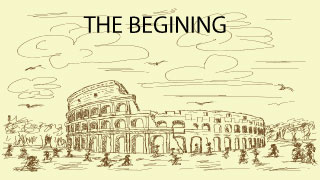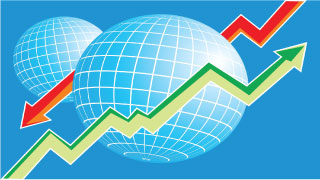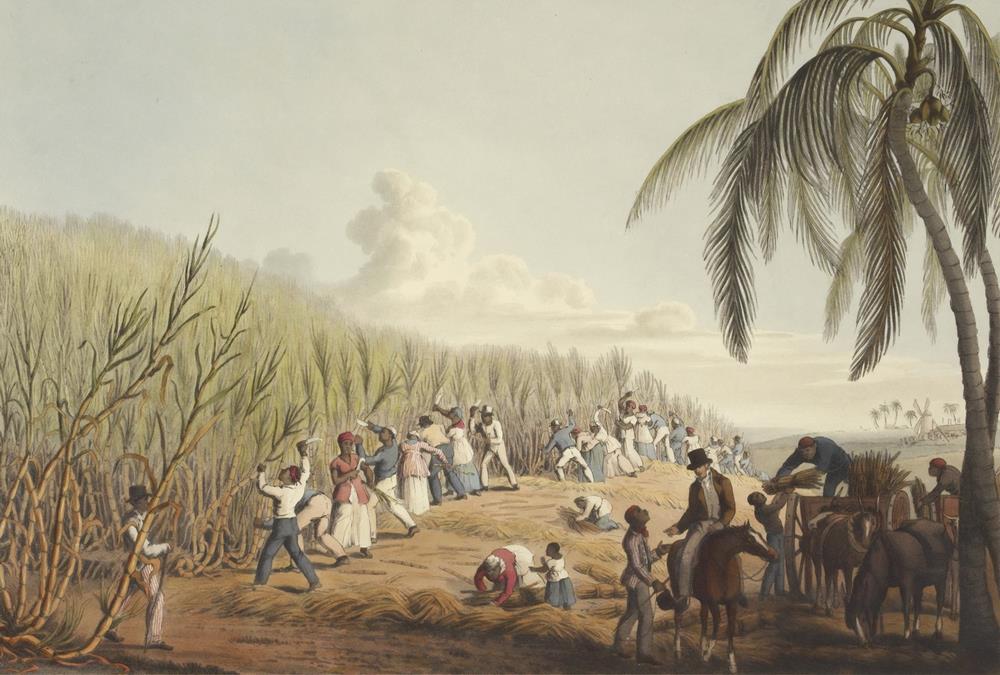- Home
- Business Processes
- Industry Knowledge
- Aerospace Industry
- Automotive Industry
- Banking Domain
- BFSI Industry
- Consumer/ FMCG Industry
- Chemicals Industry
- Engineering & Construction
- Energy Industry
- Education Domain
- Finance Domain
- Hospitality Domain
- Healthcare Industry
- Insurance Domain
- Retail Industry
- Travel and Tourism Domain
- Telecom Industry
- Leadership Skills
- eLearning
- Home
- Industry Knowledge
- Banking Domain
- History of Banking: Evolution of Banking as an Industry
History of Banking: Evolution of Banking as an Industry
Banking is one of the oldest industries and banking in the form that we know of began at about 2000BC of the ancient world. It started with merchants making grain loans to farmers and traders while carrying goods between cities. Since then, the banking industry has evolved from a simplistic barter system and gift economies of earlier times to modern complex, globalized, technology-driven, and internet-based e-banking model. In this article, we will take you through the major events and developments in the history of the banking industry.
 The History of Banking began at about 2000BC of the ancient world when merchants made grain loans to farmers and traders started carrying goods between cities within the areas of Assyria and Babylonia. The Code of Hammurabi, dating back to about 1772 BC, is one of the oldest deciphered writings of significant length in the world that deals with matters of contract and set the terms of a transaction. This code also included standardized procedures for handling loans, interest, and guarantees.
The History of Banking began at about 2000BC of the ancient world when merchants made grain loans to farmers and traders started carrying goods between cities within the areas of Assyria and Babylonia. The Code of Hammurabi, dating back to about 1772 BC, is one of the oldest deciphered writings of significant length in the world that deals with matters of contract and set the terms of a transaction. This code also included standardized procedures for handling loans, interest, and guarantees.
Later on, in ancient Greece and during the Roman Empire, lenders based in temples made loans and started accepting of deposits. Banking activities in Greece are more varied and sophisticated than in any previous society. They took deposits, made loans, changed money from one currency to another, and tested coins for weight and purity. They even engaged in book transactions. Moneylenders can be found who will accept payment in one Greek city and arrange for credit in another, avoiding the need for the customer to transport or transfer large numbers of coins.
Banking, in the modern sense of the word, can be traced to medieval and early Renaissance Italy, to the rich cities in the north such as Florence, Venice, and Genoa. The development of banking spread through Europe and a number of important innovations took place in Amsterdam during the Dutch Republic in the 16th century and in London in the 17th century. Some of the earlier systems that facilitated trading/exchange of goods were barter system and gift economies.
Barter System:
 The Barter system is an age-old method that was adopted by people to exchange their services and goods. This system was used for centuries, before the invention of money. People used to exchange goods or services for other goods or services in return. The advantage of bartering is that it does not involve money. You can buy an item in exchange for some other thing you currently have but don't want. The barter system was one of the earliest forms of trading. It facilitated the exchange of goods and services, as money was not invented in those times. The barter system has been in use throughout the world for centuries. The invention of money did not result at the end of bartering services.
The Barter system is an age-old method that was adopted by people to exchange their services and goods. This system was used for centuries, before the invention of money. People used to exchange goods or services for other goods or services in return. The advantage of bartering is that it does not involve money. You can buy an item in exchange for some other thing you currently have but don't want. The barter system was one of the earliest forms of trading. It facilitated the exchange of goods and services, as money was not invented in those times. The barter system has been in use throughout the world for centuries. The invention of money did not result at the end of bartering services.
Gift Economy:
 A gift economy (or gift culture) is a society where valuable goods and services are regularly given without any explicit agreement for immediate or future rewards. The gifts are exchanged as per the prevailing informal customs, rather than an explicit exchange of goods or services for money or some other commodity. Gift economies were prevalent before the advent of market economies but gradually disappeared as societies became more complex. Contrary to popular conception, there is no evidence that societies relied primarily on barter before using the money for trade, Instead, non-monetary societies operated largely along with the principles of gift economics and debt. When barter did in fact occur, it was usually between complete strangers.
A gift economy (or gift culture) is a society where valuable goods and services are regularly given without any explicit agreement for immediate or future rewards. The gifts are exchanged as per the prevailing informal customs, rather than an explicit exchange of goods or services for money or some other commodity. Gift economies were prevalent before the advent of market economies but gradually disappeared as societies became more complex. Contrary to popular conception, there is no evidence that societies relied primarily on barter before using the money for trade, Instead, non-monetary societies operated largely along with the principles of gift economics and debt. When barter did in fact occur, it was usually between complete strangers.
Banking in 20th Century:
 During the 20th century, developments in telecommunications and computing resulting in major changes to the way banks operated and allowed them to dramatically increase in size and geographic spread. The Late-2000s financial crisis saw significant numbers of bank failures, including some of the world's largest banks. The following paragraph provides a snapshot of some developments in the banking industry over the last century:
During the 20th century, developments in telecommunications and computing resulting in major changes to the way banks operated and allowed them to dramatically increase in size and geographic spread. The Late-2000s financial crisis saw significant numbers of bank failures, including some of the world's largest banks. The following paragraph provides a snapshot of some developments in the banking industry over the last century:
The 1930s-1960s – The Great Depression:
During the Crash of 1929 preceding the Great Depression, banking and brokerage firms were operating with margin requirements of mere ~10%. It meant that the brokerage firms would lend $9 for every $1 an investor had deposited. When the market fell, brokers called in these loans, which could not be paid back. Banks began to fail as debtors defaulted on debt and depositors attempted to withdraw their deposits en masse, triggering multiple banking runs.
Government guarantees and Federal Reserve banking regulations to prevent such panics were ineffective or not used. Bank failures led to the loss of billions of dollars in assets. After the panic of 1929, and during the first 10 months of 1930, 744 US banks failed and in all, over 9,000 banks failed during the 1930s. The depression is said to be one of the factors leading to World War II and the post-war recovery period saw governments taking on a more active and larger role in banking, leading to increased regulation. In response to these many countries significantly increased financial regulation and established regulatory agencies to oversee banking operations and during the post-Second World War period two organizations were created: The International Monetary Fund (IMF) and the World Bank.

1970s-2000s - Deregulation & Globalization:
 During the 1970s, there were a number of small stock market crashes tied to the regulations put in place after the Great Depression. These crashes led to the deregulation of banking restrictions and the privatization of government-owned financial institutions. Global banking and capital market services proliferated during the 1980s after the deregulation of financial markets in a number of countries. The 1986 'Big Bang' in London allowing banks to access capital markets in new ways, which led to significant changes to the way banks operated and accessed capital.
During the 1970s, there were a number of small stock market crashes tied to the regulations put in place after the Great Depression. These crashes led to the deregulation of banking restrictions and the privatization of government-owned financial institutions. Global banking and capital market services proliferated during the 1980s after the deregulation of financial markets in a number of countries. The 1986 'Big Bang' in London allowing banks to access capital markets in new ways, which led to significant changes to the way banks operated and accessed capital.
This period saw a significant internationalization of financial markets. American corporations and banks started seeking investment opportunities abroad, prompting the development in the U.S. of mutual funds specializing in trading of foreign stock markets. Growing internationalization changed the competitive landscape, as now many banks would function as much as possible as a “one-stop” supplier of both retail and wholesale financial services. Financial services continued to grow through the 1980s and 1990s as a result of a great increase in demand from companies, governments, and financial institutions.
Beginning of 21st Century - The Decade of Internet Banking:
The early 2000s were marked by the consolidation of existing banks and entrance into the market of other financial intermediaries: non-bank financial institutions. Large corporate players ventured into the financial service community, offering competition to established banks. The main services offered included insurances, pension, mutual, money market and hedge funds, loans and credits, and securities.
The process of financial innovation advanced enormously in the first decade of the 21 century, and banks explored other profitable financial instruments, diversifying banks' business and this had a positive impact on the economic wellness of the banking industry. This decade marked the beginning of the era in which the distinction between different financial institutions, banking, and non-banking is gradually vanishing. Technological advances during the decade shifted the way banks operate from traditional branch banking to internet and e-banking.
Late-2000s Financial Crisis:
 Subprime mortgage lending to borrowers with poor credit led to a financial crisis in 2007. The crisis originated in the United States, but financial institutions around the world were affected as the banking industry was truly globalized at that point. Many institutions failed worldwide forcing central banks to take substantial recovery measures to stabilize the banking system. The Late-2000s financial crisis caused significant stress on banks around the world. The failure of a large number of major banks resulted in government bail-outs. The global financial crisis forced governments around the world to re-evaluate their financial regulations.
Subprime mortgage lending to borrowers with poor credit led to a financial crisis in 2007. The crisis originated in the United States, but financial institutions around the world were affected as the banking industry was truly globalized at that point. Many institutions failed worldwide forcing central banks to take substantial recovery measures to stabilize the banking system. The Late-2000s financial crisis caused significant stress on banks around the world. The failure of a large number of major banks resulted in government bail-outs. The global financial crisis forced governments around the world to re-evaluate their financial regulations.
Banking in the Last Decade:
 The impact of the global financial crisis and the terrorist attacks of September 11, 2001, had an enormous impact on the banking industry. There have been many changes in the banking industry in the past 10 years. The banks have been collecting vast amounts of data about customers, channels, financials, and risk, and the availability of analytical technology opened a means to effectively manage and analyze data. Security, privacy, and fraud prevention became an area of prime focus and many measures have been taken in this regard. Globalization of financial products and services continued at an unprecedented pace drives were made for the financial inclusion of unbanked, poor and marginalized people. The industry witnessed the emergence of microfinance, microloans, mobile money, and other services geared to provide people in emerging and/or impoverished economies with reliable and secure financial resources. Acts were enacted to ensure greater transparency and accountability. The advent of technology provided the operational flexibility that did not exist in 2001.
The impact of the global financial crisis and the terrorist attacks of September 11, 2001, had an enormous impact on the banking industry. There have been many changes in the banking industry in the past 10 years. The banks have been collecting vast amounts of data about customers, channels, financials, and risk, and the availability of analytical technology opened a means to effectively manage and analyze data. Security, privacy, and fraud prevention became an area of prime focus and many measures have been taken in this regard. Globalization of financial products and services continued at an unprecedented pace drives were made for the financial inclusion of unbanked, poor and marginalized people. The industry witnessed the emergence of microfinance, microloans, mobile money, and other services geared to provide people in emerging and/or impoverished economies with reliable and secure financial resources. Acts were enacted to ensure greater transparency and accountability. The advent of technology provided the operational flexibility that did not exist in 2001.
Banking Domain Knowledge - Resources
Related Links
You May Also Like
-
Definition of Bank: Meaning of the term Bank and the Business of Banking
What do we mean by the word bank? How did the word bank originate? What is the most simple and concise definition of a bank that explains the fundamentals of the banking process? Does the definition of banking vary from country to country? What are the key differentiators between any other business and a Bank? Get answers to all these questions and explore the basics of bank and banking as an industry.
-
History of Banking: Evolution of Banking as an Industry
Banking is one of the oldest industries and banking in the form that we know of began at about 2000BC of the ancient world. It started with merchants making grain loans to farmers and traders while carrying goods between cities. Since then, the banking industry has evolved from a simplistic barter system and gift economies of earlier times to modern complex, globalized, technology-driven, and internet-based e-banking model. In this article, we will take you through the major events and developments in the history of the banking industry.
-
History of Banking: Famous Banks from the Past
Seven hundred years ago a bank was established in Venice, which made transactions resembling modern banking. In 1407, another bank was founded in Italy under the name of Banco di San Giorgio which was one of the oldest chartered banks in Europe. Sveriges Riksbank (Riksbanken), is the central bank of Sweden and the world's oldest central bank. The Bank of England is the second oldest central bank in the world, and most modern central banks have been based on that model. Let us explore some interesting events as we learn more about these early banking institutions.
-
History of Banking: The Gold Standard & Fractional Reserve Banking
Gold has always been considered as a safe economic investment and treated like a currency. All of the economically advanced countries of the world were on the gold standard for a relatively brief time. Under a gold standard, the value of a unit of currency, such as a dollar, is defined in terms of a fixed weight of gold and banknotes or other paper money are convertible into gold accordingly. Explore the fascinating history of the gold standard through the lens of history and also learn why banks hold back a certain fraction of deposits as reserves.
-
Overview of Banking Industry: The Industry Basics
Banks play a key role in the entire financial system by mobilizing deposits from households spread across the nation and making these funds available for investment, either by lending or buying securities. Today the banking industry has become an integral part of any nation’s economic progress and is critical for the financial wellbeing of individuals, businesses, nations, and the entire globe. In this article, we will provide an overview of key industry concepts, main sectors, and key aspects of the banking industry’s business model and trends.
-
Banking Sector, Segments & It's Classifications
The banking industry players deal in a variety of products from savings accounts to loans and mortgages, offer various services from check cashing to underwriting, caters to different types of customers from individuals to large corporates, serve diverse geographies from rural villages to cross-border operations. Thus the banking industry is made up of several types of banks, with their own objectives, roles, and functions. In this article, we will explore the various sectors, segments, and classifications of banking based on parameters like products, customers, types, etc.
-
Type of Banks: Different Types of Banks in India & their Functions
This article explains the banking structure in India and how different banks are classified as per RBI Norms. The Indian banking industry has been divided into two parts, organized and unorganized sectors. The organized sector consists of Reserve Bank of India, Commercial Banks and Co-operative Banks, and Specialized Financial Institutions (IDBI, ICICI, IFC, etc.). The unorganized sector, which is not homogeneous, is largely made up of money lenders and indigenous bankers. Learn what we mean by nationalized banks, scheduled banks, public sector banks, private banks, and foreign banks.
-
Types of Banks: Different Banks & their Classifications (Global)
The banking industry caters to various sections of society thus the focus of banking becomes varied, catering to the diverse needs of clients through different products, services, and methods. To meet this, we need distinctive kinds of banks addressing complex business & social needs. In this article, we will explain various types of banking institutions ranging from retail banks, commercial banks, co-operative banks, investment banks, central banks to various other types of specialized banks.
-
Banking Operations: Understanding Various Transactions & Activities
Banks perform a variety of operations ranging from basic or primary functions like day to day transactions at a branch to others that maybe the agency or general utility services in nature. The transactions that are incidental to revenue/sales or sustaining the business are an important element of the banking industry value chain. In this article, we will look at the key operations performed in the course of banking.
-
Banking Industry Business Model - Understanding How the Banking System Works
Banks are commercial profitable institutions and need to increase their business, grow their revenue, and provide returns to their owners. Unlike other stores and shops, banks are providing services rather than selling their products. Learn how banks get their funds and how they make money on services. Read more to learn how the banks earn their profit!
Explore Our Free Training Articles or
Sign Up to Start With Our eLearning Courses

About Us
Learning
© 2023 TechnoFunc, All Rights Reserved










